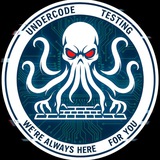▁ ▂ ▄ u𝕟𝔻Ⓔ𝐫Ć𝔬𝓓ⓔ ▄ ▂ ▁
🦑403 Forbidden Error Variations :
Like many other HTTP status codes, there are a lot of different variations for how this error code presents itself.
Here are some common variations that you might come across:
1️⃣“Forbidden – You don’t have permission to access / on this server”
2️⃣ “403 – Forbidden: Access is denied”
3️⃣“403 – Forbidden Error – You are not allowed to access this address”
4️⃣“403 Forbidden – nginx” (host)
5️⃣“HTTP Error 403 – Forbidden – You do not have permission to access the document or program you requested”
6️⃣“403 Forbidden – Access to this resource on the server is denied”
7️⃣“403. That’s an error. Your client does not have permission to get URL / from this server”
8️⃣“You are not authorized to view this page”
8️⃣“It appears you don’t have permission to access this page.”
If you’re on an Nginx server, it will look like this below. Basically, if you see any mention of “forbidden” or “not allowed to access”, you’re probably dealing with a 403 Forbidden error.
▁ ▂ ▄ u𝕟𝔻Ⓔ𝐫Ć𝔬𝓓ⓔ ▄ ▂ ▁
🦑403 Forbidden Error Variations :
Like many other HTTP status codes, there are a lot of different variations for how this error code presents itself.
Here are some common variations that you might come across:
1️⃣“Forbidden – You don’t have permission to access / on this server”
2️⃣ “403 – Forbidden: Access is denied”
3️⃣“403 – Forbidden Error – You are not allowed to access this address”
4️⃣“403 Forbidden – nginx” (host)
5️⃣“HTTP Error 403 – Forbidden – You do not have permission to access the document or program you requested”
6️⃣“403 Forbidden – Access to this resource on the server is denied”
7️⃣“403. That’s an error. Your client does not have permission to get URL / from this server”
8️⃣“You are not authorized to view this page”
8️⃣“It appears you don’t have permission to access this page.”
If you’re on an Nginx server, it will look like this below. Basically, if you see any mention of “forbidden” or “not allowed to access”, you’re probably dealing with a 403 Forbidden error.
▁ ▂ ▄ u𝕟𝔻Ⓔ𝐫Ć𝔬𝓓ⓔ ▄ ▂ ▁
▁ ▂ ▄ u𝕟𝔻Ⓔ𝐫Ć𝔬𝓓ⓔ ▄ ▂ ▁
🦑 Dns spy 2020 updated -Reverse engeneer :
Too much features :
1) Debug .NET Framework, .NET Core and Unity game assemblies, no source code required
2) Set breakpoints and step into any assembly
Locals, watch, autos windows
3) Variables windows support saving variables (eg. decrypted byte arrays) to disk or view them in the hex editor (memory window)
4) Object IDs
5) Multiple processes can be debugged at the same time
6) Break on module load
7) Tracepoints and conditional breakpoints
8) Export/import breakpoints and tracepoints
9) Call stack, threads, modules, processes windows
10) Break on thrown exceptions (1st chance)
11) Variables windows support evaluating C# / Visual Basic expressions
12) Dynamic modules can be debugged (but not dynamic methods due to CLR limitations)
13) Output window logs various debugging events, and it shows timestamps by default :)
14) Assemblies that decrypt themselves at runtime can be debugged, dnSpy will use the in-memory image. You can also force dnSpy to always use in-memory images instead of disk files.
15) Public API, you can write an extension or use the C# Interactive window to control the debugger
🄸🄽🅂🅃🄰🄻🄻🄸🅂🄰🅃🄸🄾🄽 & 🅁🅄🄽 :
1️⃣git clone --recursive https://github.com/0xd4d/dnSpy.git
2️⃣cd dnSpy
# or dotnet build
3️⃣./build.ps1 -NoMsbuild
✅ git sources
@UndercodeTesting
@UndercodeSecurity
@UndercodeHacking
▁ ▂ ▄ u𝕟𝔻Ⓔ𝐫Ć𝔬𝓓ⓔ ▄ ▂ ▁
🦑 Dns spy 2020 updated -Reverse engeneer :
Too much features :
1) Debug .NET Framework, .NET Core and Unity game assemblies, no source code required
2) Set breakpoints and step into any assembly
Locals, watch, autos windows
3) Variables windows support saving variables (eg. decrypted byte arrays) to disk or view them in the hex editor (memory window)
4) Object IDs
5) Multiple processes can be debugged at the same time
6) Break on module load
7) Tracepoints and conditional breakpoints
8) Export/import breakpoints and tracepoints
9) Call stack, threads, modules, processes windows
10) Break on thrown exceptions (1st chance)
11) Variables windows support evaluating C# / Visual Basic expressions
12) Dynamic modules can be debugged (but not dynamic methods due to CLR limitations)
13) Output window logs various debugging events, and it shows timestamps by default :)
14) Assemblies that decrypt themselves at runtime can be debugged, dnSpy will use the in-memory image. You can also force dnSpy to always use in-memory images instead of disk files.
15) Public API, you can write an extension or use the C# Interactive window to control the debugger
🄸🄽🅂🅃🄰🄻🄻🄸🅂🄰🅃🄸🄾🄽 & 🅁🅄🄽 :
1️⃣git clone --recursive https://github.com/0xd4d/dnSpy.git
2️⃣cd dnSpy
# or dotnet build
3️⃣./build.ps1 -NoMsbuild
✅ git sources
@UndercodeTesting
@UndercodeSecurity
@UndercodeHacking
▁ ▂ ▄ u𝕟𝔻Ⓔ𝐫Ć𝔬𝓓ⓔ ▄ ▂ ▁
GitHub
dnSpy/dnSpy
.NET debugger and assembly editor. Contribute to dnSpy/dnSpy development by creating an account on GitHub.
